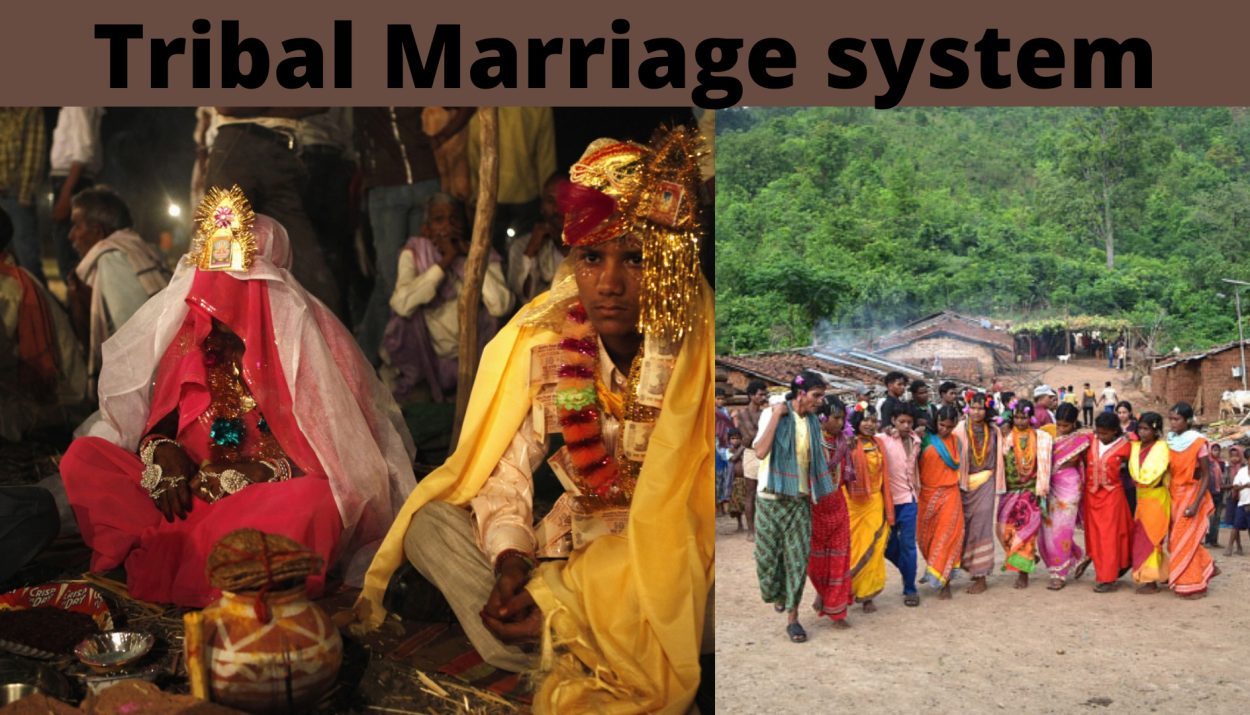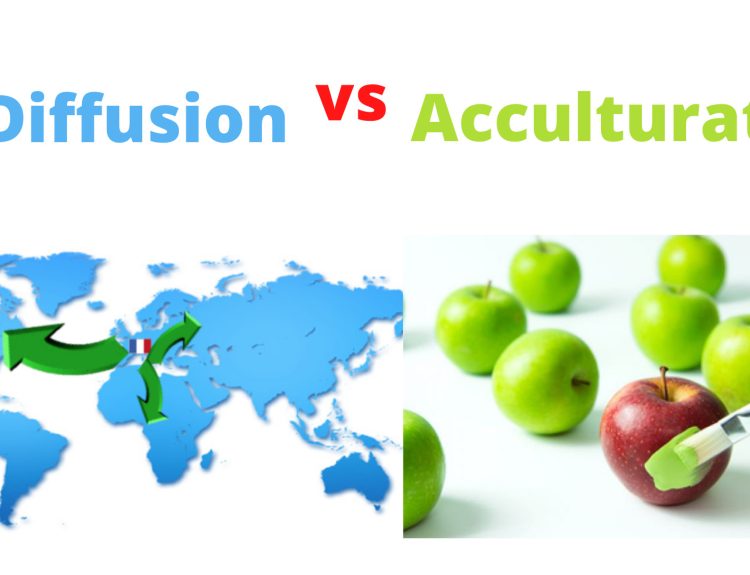There are 8 types of Indian tribal marriages-
Probationary marriage
In this type of marriage, the boy and the girl live together in the girl’s parent’s house for some time to get to know each other. Later if they like each other they get married otherwise boy gives compensation to the girl and get separated.
Examples- Kuki tribe of Manipur
Marriage by Trial
The main aim of this type of marriage is to examine the courage, power and bravery of a boy.
Examples-
- Bhil tribe of M.P.
There is a custom of dance during the Holi festival called “Gol Gadhedo”. During this ceremony, jaggery and coconut are placed at the top of the pole or a tree. The boys and girls dance around the pole or tree in a circle. The inner circle is occupied by girls and the outer one by the boys. Now any boy pushes the girls and tries to break the circle to eat jaggery and coconut by climbing the tree or pole. The girls try to stop them. If the boy comes out successful, he is free to choose any girl from the inner circle.

- American Indian
A boy cannot marry a girl until he hunts a lion.
- Comanche tribe
Marriage by capture
Here the boy forcefully takes the girl without her parent’s consent.
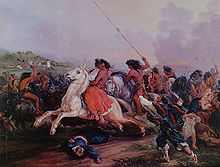
There are two types of capture-
- Physical capture
Here the boy with the help of his friends kidnaps the girl by using physical force and takes her home.
- Ceremonial capture
In this type of kidnapping, a young man forcefully fills vermilion in his girlfriend’s forehead in a public place and the capture is given the form of a minor celebration.
Examples-
Kondha, Juang, Kharia, Bhil, Naga, Munda, Birhor etc.
Among the Ho and Gond tribe, this type of marriage occurs due to the high bride price.
Marriage by service
Here the bride price is not paid in the form of money but as a service. The boy lives at the girl’s house and does household work without any payment. He does this work to equalizes the bride price.
Note- Bride price is the practice in which a bridegroom gives money to his bride’s family.
Examples-
Gond, Baiga
Among the Gonds, the boy is known as Lamini and among Baiga, he is termed as Lamena.
Marriage by purchase
Here the boy pays the bride price to the girl’s parents. This is an important part of marriage rituals.
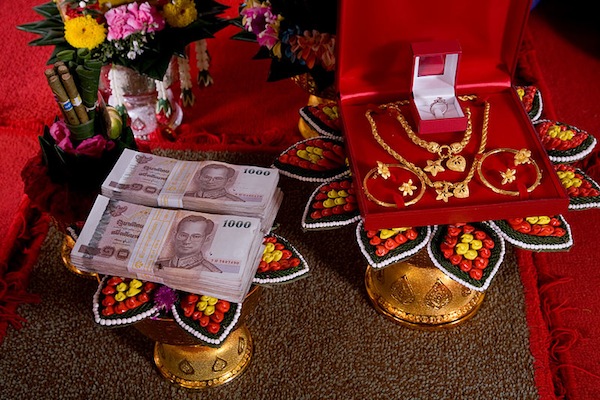
According to Robert Lowie, the bride price is not a medium to buy or sell the bride but highlights the bride’s importance in her home. It is compensation to the bride’s parents in return for her marriage.
The concept of bride price is basically found among all the tribes of India.
Examples- Santhal, Ho, Kharia, Oraon, Gond, Bhil, Kuki etc.
Marriage by mutual consent and elopement
Here the boy and girl run away together and with mutual consent, they both marry each other without their parent’s involvement.
Examples-
Bhil, Birhor etc.
Among the Ho tribe of Bihar, this type of marriage is known as “Rajikhushi”, which means both boy and girl are happy to marry each other.
Marriage by exchange
It is another way to avoid bride price. Here the exchange of boy and girl takes place in two families. It is very difficult to find such two families where both son and daughter are of marriageable age.
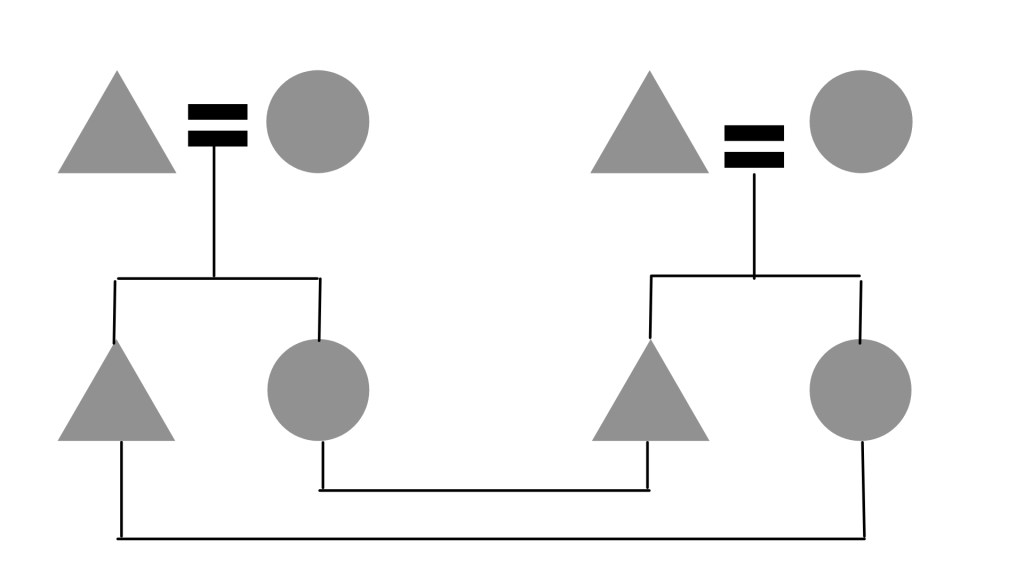
Examples- Shoshone Indians
Marriage by Intrusion
Here a girl forcefully enters the house of a boy and she remains there until she is accepted by the boy and his family.
During the process, she may get hurt, disrespected and tortured but she never gives up and later the boy is socially compelled to marry her.
Examples- Oraon, Munda
Among the Santhal, it is termed as “Nirbolok”.
Read more:
Is Family a universal Institution?
- The Maharaj Libel Case of 1862: A Landmark in Colonial Legal and Social History
- Acclimatization: The Subtle Dance Between Humans and Their Environment
- The Anthropology of Sleep
- Lamarck’s Theory of Evolution
- Bipedalism and Structural Changes


